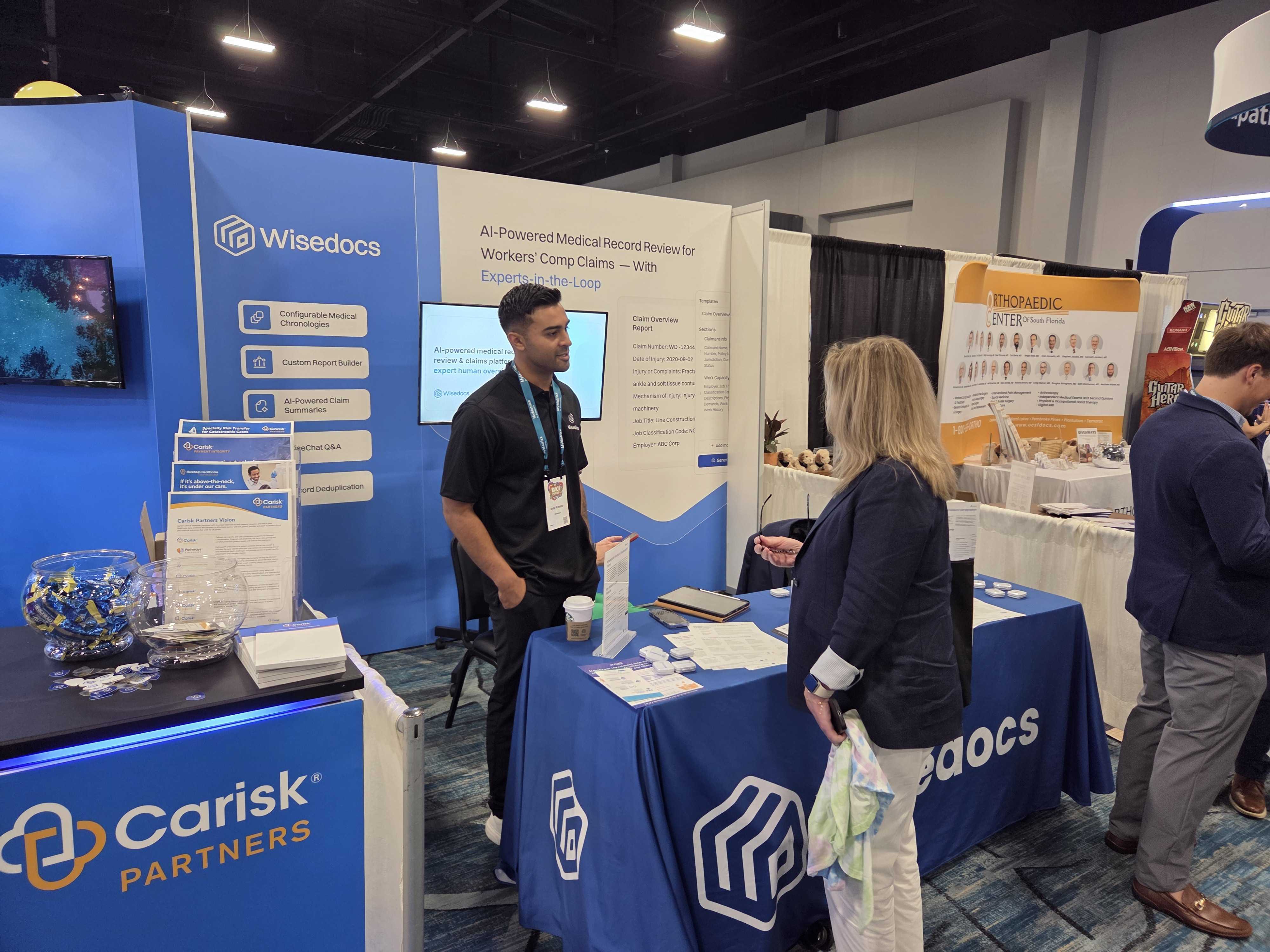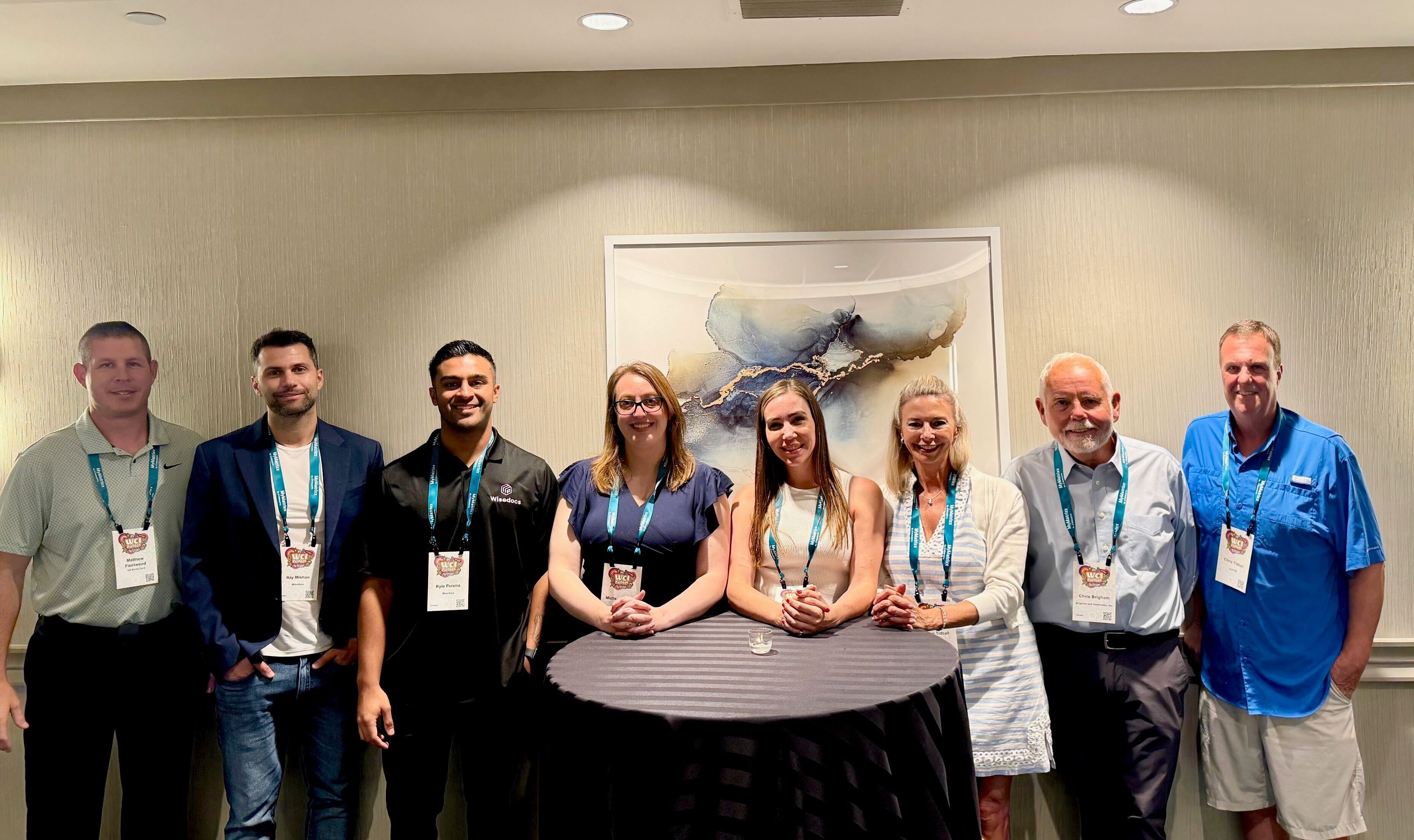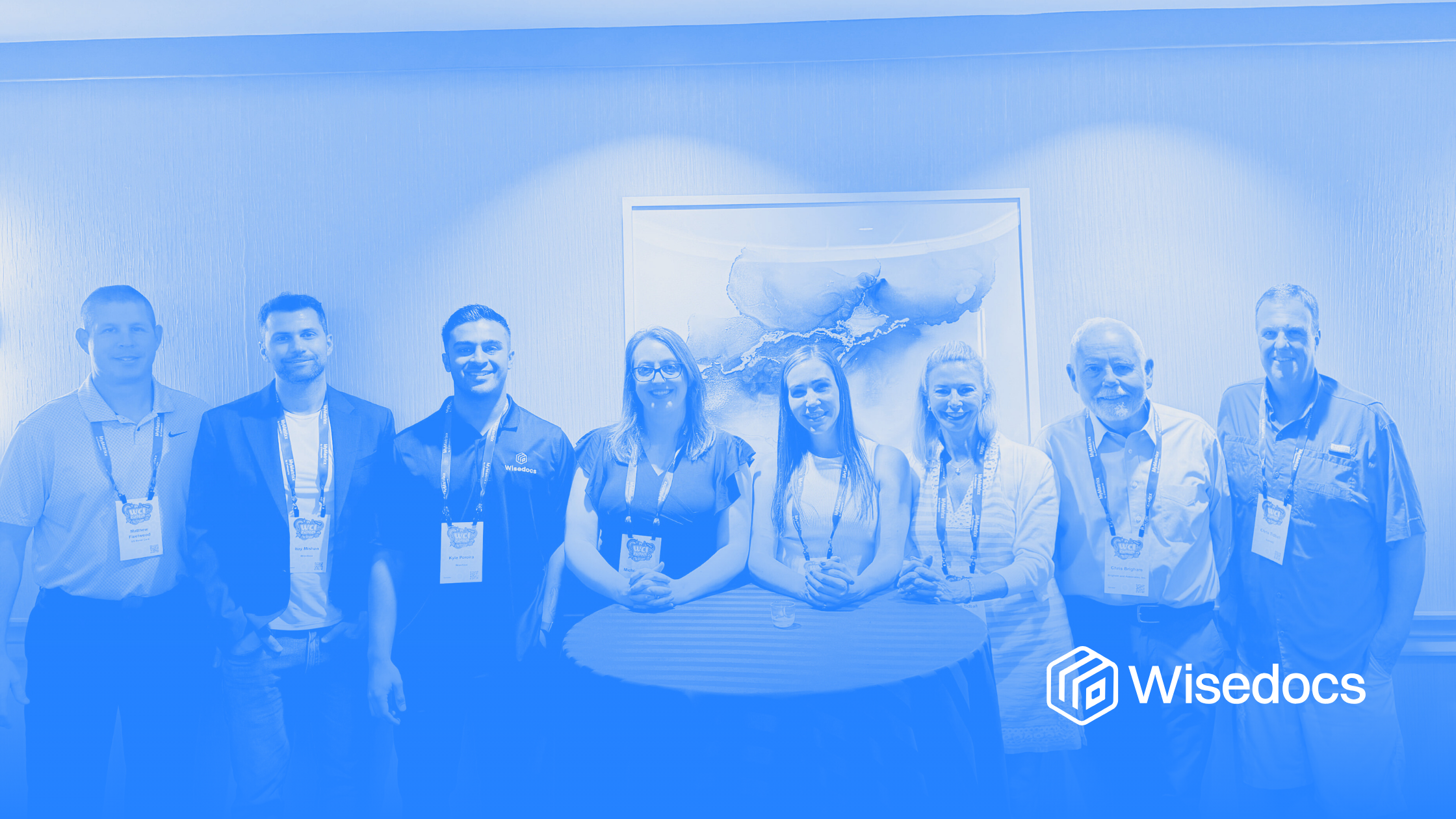From Data to Decisions: A CTO’s Reflections on WCI 2025
As CTO of Wisedocs, I had the privilege of joining conversations at The Workers’ Compensation Institute’s Annual Conference WCI 2025 that highlighted not just where AI is headed, but how it’s already reshaping the realities of workers’ compensation today.
As CTO of Wisedocs, I had the privilege of joining conversations at The Workers’ Compensation Institute’s Annual Conference WCI 2025 that highlighted not just where AI is headed, but how it’s already reshaping the realities of workers’ compensation today.
WCI 2025 brought together thousands of professionals shaping the future of workers’ compensation, and one theme stood out. AI is no longer a distant idea, it is already changing how cases are handled. With costs rising 2% to 14% each year from 2021 to 2023 across 18 states, the need for better tools is more urgent than ever. What I kept hearing—and firmly believe—is that technology should exist to empower people to make choices grounded in accuracy, fairness, and defensibility.
On August 18, I joined a panel moderated by Dr. Christopher Brigham with Adam Fisher, Chief Data Officer at Sedgwick. Our session, From Data to Decisions: How AI is Transforming Claims and Document Analysis, Interviewing, and Claims Management, explored how AI is already reviewing health records, analyzing files, and supporting stronger outcomes while keeping expert human oversight at the center. As I reflected on the session and conversations held at WCI, these were the takeaways that resonated most with me.
Turning Unstructured Data into Defensible Workers’ Comp Decisions
One of the biggest challenges in workers’ compensation is turning unstructured information into credible decisions. Clinical documentation is often full of duplicates or irrelevant pages, and interview notes can be inconsistent. Our panel showed how AI can turn this chaos of vast medical data points into structured, reliable insights, but specialist supervision is what makes those insights explainable and justifiable.
In Wisedocs’ recent survey report run in partnership with ALM PropertyCasualty360, only 16% of professionals trusted AI on its own, but trust rose to 60% when experts validated the outputs. It’s clear that the market understands AI can do the heavy lifting, however it is the human judgment component that gives people a nearly 4x confidence increase in the results. Attendees of the session left with practical ways to apply this, from structuring records to improving interviews, always with qualified validation at the center.
From Unstructured Healthcare Data to Smarter Decisions
I spoke about how AI can turn messy, unorganized medical documents into clean, searchable datasets. The reality is most organizations still rely on highly manual processes, reviewing every page individually, and leading to missed critical data. Around 80% of healthcare data (from clinical notes to imaging reports and discharge summaries) is unstructured and not ready for traditional analysis. Making this data usable is critical for faster reviews, more precise assessments, and better outcomes for injured employees and insurers. It is one of the clearest examples of how technology can support practitioners by giving them organized, actionable information instead of forcing them to dig through thousands of pages.
Our survey also showed that many organizations are turning to AI to improve efficiency and productivity, a clear sign the industry is ready for claims documentation platforms that reduce manual work and free up time for higher-value decisions. While traditional analytics and big data are well established in workers’ comp, I also heard growing interest in how generative AI could push these capabilities even further.

The Human Element in AI-Powered Workers’ Comp Decisions
At WCI, I shared how AI is already improving case work. In one example, Wisedocs processed more than 20,000 medical record pages and found about 60% were duplicates, wrong files, or irrelevant notes. This clear example showed how AI can uncover the needle in the haystack, surfacing critical details faster so workers’ compensation claims reviewers can focus on what matters most, supporting claimant’s recovery and getting them back to work. This technology is saving real time and benefiting the injured workers, without sacrificing accuracy.
Across the sector, the results are similar. In 2025, major U.S. insurers cut administrative costs by 33%, processed cases 59% faster, improved fraud detection by 78%, and saw customer satisfaction rise by 63%. For me, the human-driven element is non-negotiable. AI empowers professionals rather than replacing them, and with expert-in-the-loop guidance at every step we build the trust, accountability, and compliance the process demands in high-stakes industries such as claims. As Dr. Brigham reminded us, humans are actually far more prone to “hallucinations” than AI, which makes skilled evaluation all the more important in guiding these tools.

Building Connections at WCI 2025 with Wisedocs
What stood out to me beyond the panels was the chance to connect. At Wisedocs’ intimate happy hour, peers came together in a relaxed setting where conversations about innovation, claims, and the future of workers’ comp carried on into the evening.
Those moments felt just as meaningful as the session itself. Hearing directly from leaders in the field showed me that while there is real excitement around AI, there is also a shared commitment to using it responsibly. That mix of energy and care is what will move the field forward. Events like WCI are a reminder that progress comes through collaboration, and I am proud that Wisedocs is helping shape the next chapter.

Looking Ahead from WCI 2025 and the Future of Claims
WCI 2025 confirmed for me that the future of workers’ comp depends on blending technology with human expertise. AI can handle the heavy lifting in claims and record review, but human oversight is what keeps decisions objective, trustworthy, and defensible. That balance is what builds real confidence.
I am grateful to the panelists, attendees, and organizers for making this such a meaningful event. The conversations will carry forward, and after years of building systems and teams, I know firsthand how powerful AI becomes when paired with informed judgment. That is where real progress will happen. The future of claims lies in the balance of innovation and accountability, and those who embrace this partnership will set the standard for what comes next.


.png)


